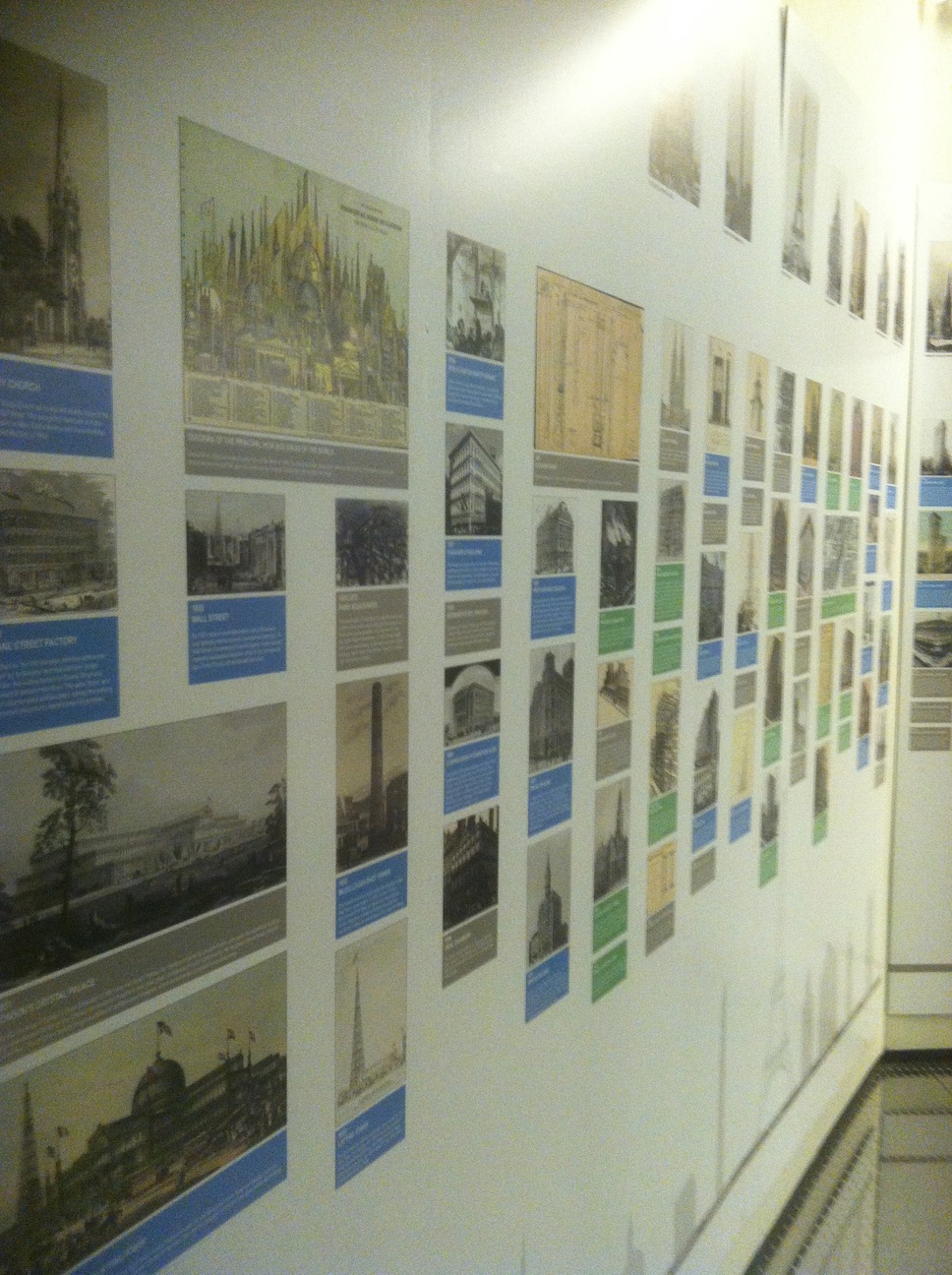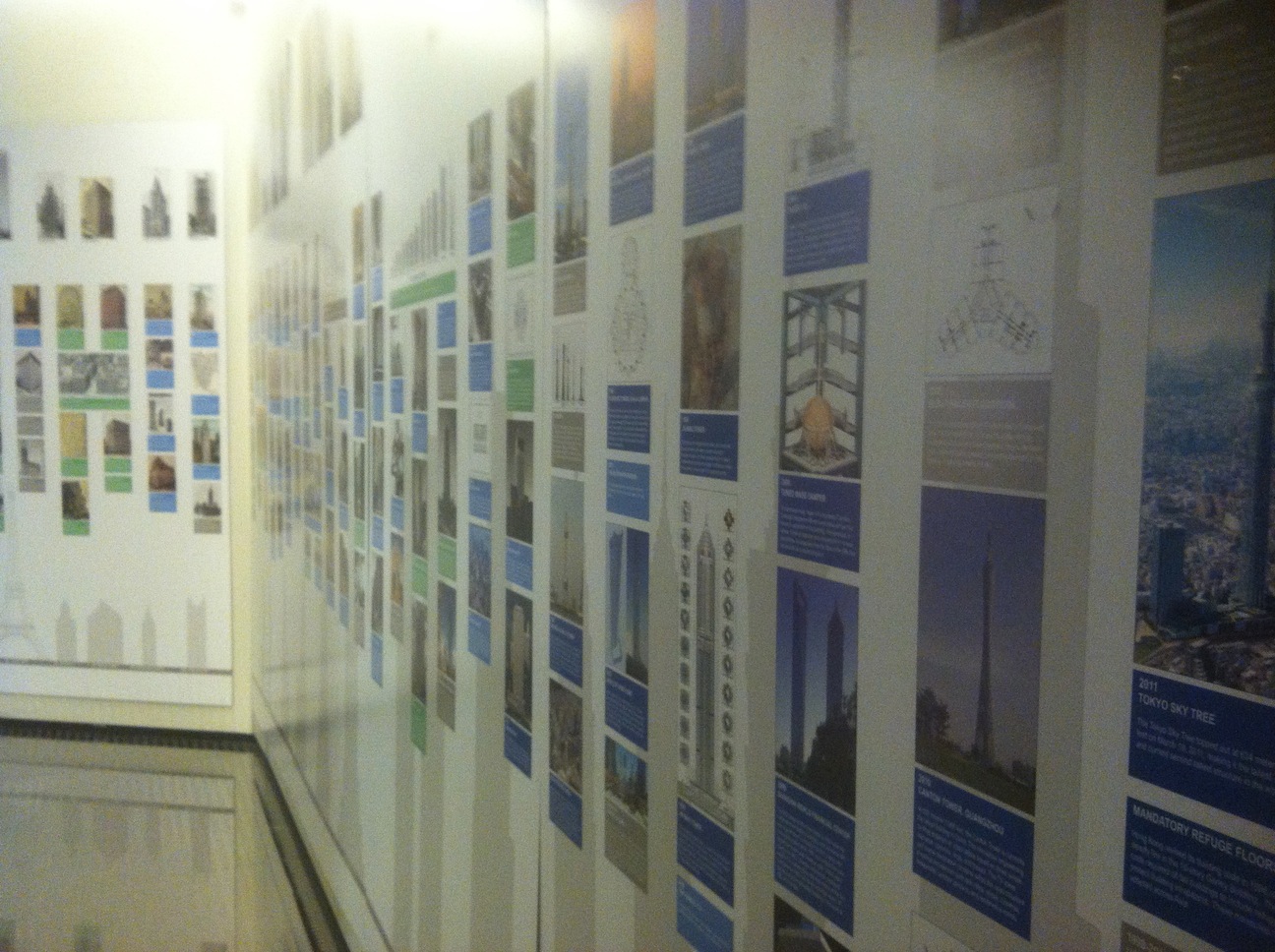The Skyscraper Museum is devoted to the study of high-rise building, past, present, and future. The Museum explores tall buildings as objects of design, products of technology, sites of construction, investments in real estate, and places of work and residence. This site will look better in a browser that supports web standards, but it is accessible to any browser or Internet device.
History of Height - for a virtual and interactive version of the wall please go here.

This mural presents selected episodes in the history of height from the pyramids to the present, highlighting themes and buildings that relate to the evolution of the skyscraper and point the way to 21st-century supertalls. It examines the ambition to build high, the technological advances and engineering innovations that enabled that desire, the economics that drove commercial development, the influence of outstanding architectural designs, and the codes and regulations that shaped buildings and skylines.
On the top row is a lineup of the successive structures that held the title of "world's tallest building." On the lower range these are scaled in silhouettes that chart that ascent through the traditions of building in masonry, metal, and concrete, leading up to the first skyscrapers in New York and Chicago in the 1870s and 1880s. From the 270-foot New York Tribune Building to the 2,717-foot Burj Khalifa in Dubai is an astonishing tenfold rise, but the acme of size in terms of overall scale, rather than sheer height, came in the 1970s, with the twin towers of the World Trade Center and the Sears, now Willis, Tower.
The central timeline is illustrated with historical prints and photographs and text boxes that are color-coded: light blue labels describe buildings and events in New York City; green labels refer to Chicago; dark blue in the final panel refers to Asia.

